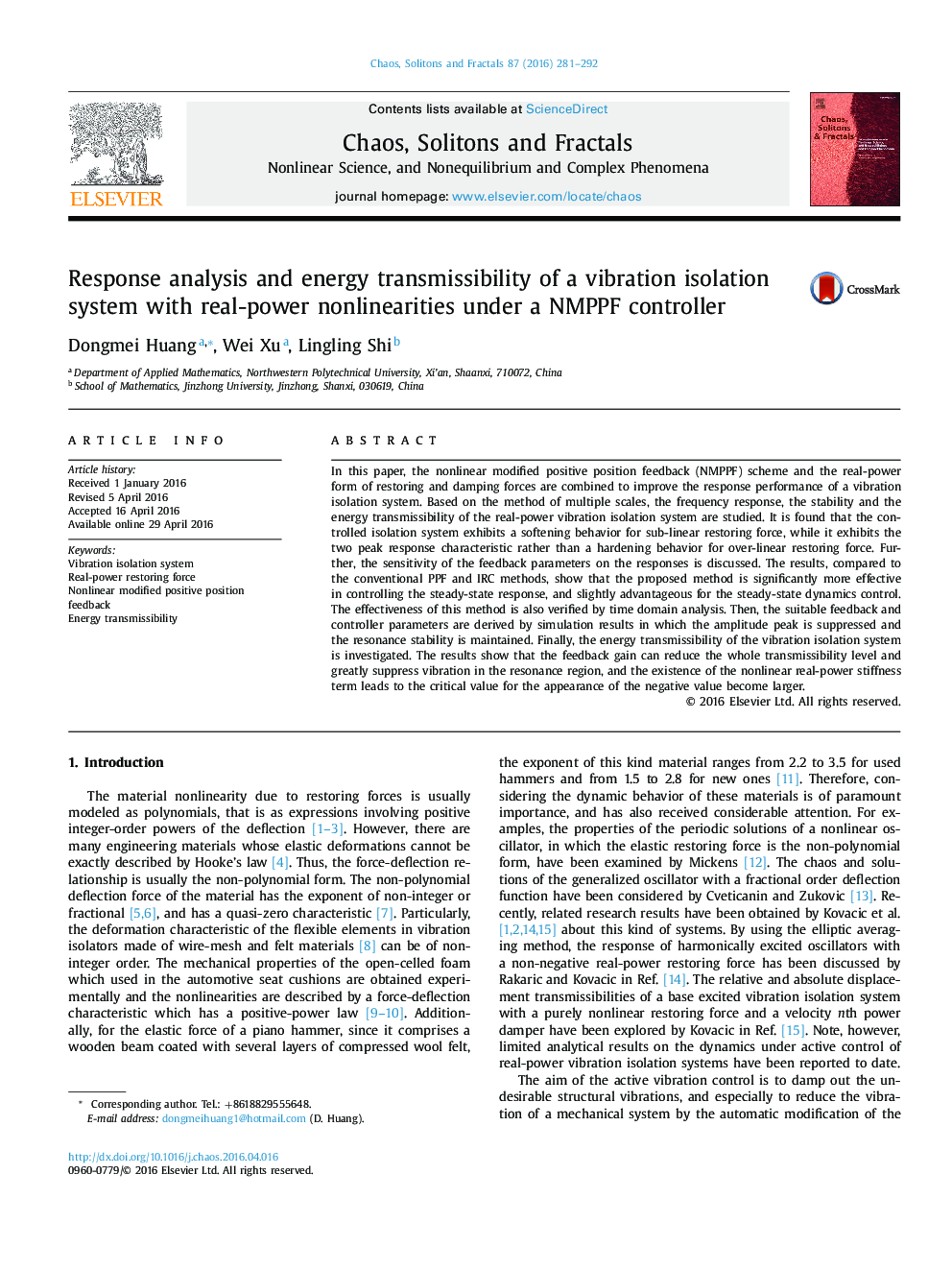| Article ID | Journal | Published Year | Pages | File Type |
|---|---|---|---|---|
| 1888766 | Chaos, Solitons & Fractals | 2016 | 12 Pages |
•The nonlinear modified positive position feedback (NMPPF) scheme and the real-power form of restoring and damping forces are combined to improve the response performance of a vibration isolation system.•The primary resonance, dynamical stability and energy transmissibility of the real-power vibration isolation system are studied.•The sensitivity of the controller parameters on the responses has been analyzed.•In order to suppress the amplitude peak, the feedback parameters have been determined by the frequency response.•The energy transmissibility is investigated.
In this paper, the nonlinear modified positive position feedback (NMPPF) scheme and the real-power form of restoring and damping forces are combined to improve the response performance of a vibration isolation system. Based on the method of multiple scales, the frequency response, the stability and the energy transmissibility of the real-power vibration isolation system are studied. It is found that the controlled isolation system exhibits a softening behavior for sub-linear restoring force, while it exhibits the two peak response characteristic rather than a hardening behavior for over-linear restoring force. Further, the sensitivity of the feedback parameters on the responses is discussed. The results, compared to the conventional PPF and IRC methods, show that the proposed method is significantly more effective in controlling the steady-state response, and slightly advantageous for the steady-state dynamics control. The effectiveness of this method is also verified by time domain analysis. Then, the suitable feedback and controller parameters are derived by simulation results in which the amplitude peak is suppressed and the resonance stability is maintained. Finally, the energy transmissibility of the vibration isolation system is investigated. The results show that the feedback gain can reduce the whole transmissibility level and greatly suppress vibration in the resonance region, and the existence of the nonlinear real-power stiffness term leads to the critical value for the appearance of the negative value become larger.
